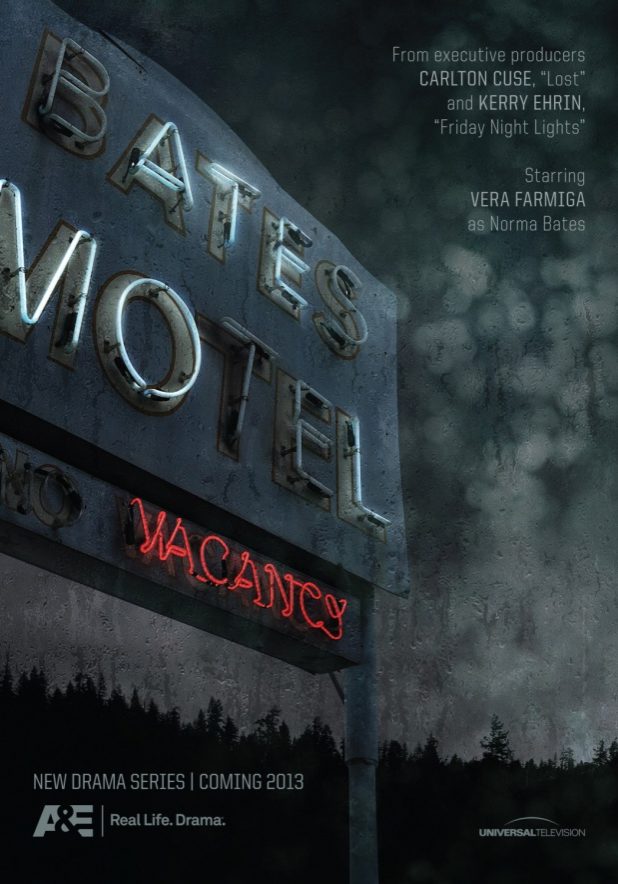Unsettling Check-In: An Introduction to Bates Motel
Imagine finding solace in the most unexpected place—only to realize the refuge is more haunted than the past you’re fleeing from. This is the groundwork upon which the 2013 series “Bates Motel” builds its tempestuous narrative. A prelude to Alfred Hitchcock’s monumental classic “Psycho,” this reimagined origin story isn’t a movie, but a thrilling horror-drama television series that delves deep into the twisted backstory of Norman Bates and the infamous Bates Motel.
Crafted by Carlton Cuse, Kerry Ehrin, and Anthony Cipriano, the series, not to be confused with a singular cinematic experience, was unleashed upon audiences with the intent to unsettle and disturb over five seasons, starting in 2013. Sans spoilers, the story unravels the complex relationship between a teenage Norman Bates (Freddie Highmore) and his overprotective mother, Norma (Vera Farmiga), as they purchase a small-town motel after a tragic death in the family.
No Vacancy: Crafting Cinematic Dread
Atmospheric Anguish
In the halls of “Bates Motel,” the horrors are as much about the unspoken as the spoken, as much about the light as about the darkness. The atmosphere and tone of the show are meticulously crafted to evoke a perpetual sense of unease. With each episode, tension builds not through jarring jumpscares but through a thickening fog of foreboding that seems to settle over the seemingly idyllic town of White Pine Bay and its residents.
Haunting Visuals
The directorial approach is subtle yet strategic; rather than relying on outright horror tactics, the series invests in a slow burn, cultivating a mood that feels as eerie as the coastal Oregon setting. Carefully orchestrated cinematography uses a gloomy color palette and off-kilter camera angles to amplify the show’s inherent darkness. The visual storytelling is as crucial as the script, with shadow play and tightly framed shots that capture the characters’ claustrophobia and paranoia.
Echoes of Terror
Leveraging a haunting soundtrack and carefully timed sound effects, the auditory elements of “Bates Motel” are nothing short of masterful. The lack of music in some scenes serves to heighten the tension, punctuating the stillness with a sharpness that promises chaos is never far away. When the music does swell, it does so with an elegiac quality that underlines the tragedy and mystery woven through the series’ narrative fabric.
Behind Closed Doors: Characters and Scares
A Cast of Nightmares
Indelible performances drive the heart of this series. Highmore delivers a nuanced transformation from sweet to sinister, while Farmiga offers a complex portrayal of a mother ensnarled by her love for her son and her own haunted past. Together, they form a dysfunctional duo that’s fascinating and terrifying in equal measure, their believable descent into darkness being key to the show’s gripping narrative.
Horror Mechanics
Analyzing the horror elements reveals the show’s preference for psychological terror over other horror subgenres. “Bates Motel” is less about the supernatural or gore, and more an intricate dance with the mental states of its characters, grounded in the real-life horrors of trauma and emotional entanglement. The effectiveness of these techniques lies in their restraint; the true horror often plays out subtly, in glances and quiet moments, in bottled-up family secrets, making the series a thoroughly chilling psychological study.
Beyond the Screams: Final Verdict
“h3″Evoking Deeper Chills
“Bates Motel” skirts the edge of horror to provide commentary on mental illness, familial bonds, and the darkness that resides in seemingly normal places. This thematic depth adds a resonant layer to the series, allowing it to transcend typical genre tropes and resonate on a profoundly human level.
A Cut Above: The Series’ Impact
So, does “Bates Motel” pass the fright test? It may not have viewers jumping out of their seats, but it certainly burrows under the skin, promising knots in the stomach rather than momentary leaps of the heart. It’s the kind of horror that lingers, thought-provoking and quietly innovative.
Those who revel in atmospheric storytelling, slow-burning character studies, and the dark psychological twists will find “Bates Motel” particularly enthralling. It’s ideally suited for horror enthusiasts who appreciate depth and patience in their scares, rather than those seeking the instant gratification of slashers or paranormal fright-fests.
Comparatively, “Bates Motel” can stand alongside esteemed psychological horrors like “The Haunting of Hill House” or “Hannibal,” yet it carves its unique niche by combining elements of crime drama and classic cinematic lore.
In conclusion, “Bates Motel” is a compelling addition to the horror genre, a deeply chilling foray into the psyche of an iconic character, and a series that will appeal to audiences looking for something more cerebral and emotionally disturbing. With caution advised for its themes of mental illness and violence, this series checks-in as a strong recommendation for those willing to explore its unsettling depths.




